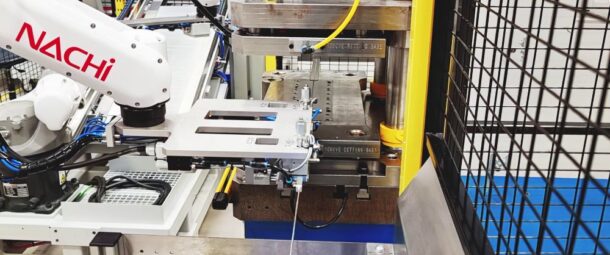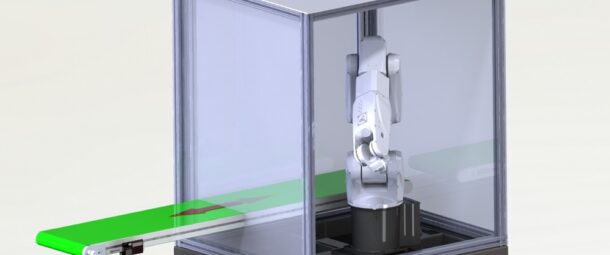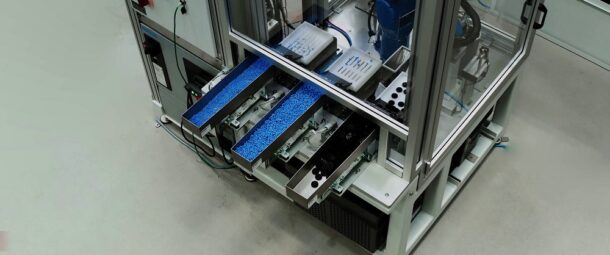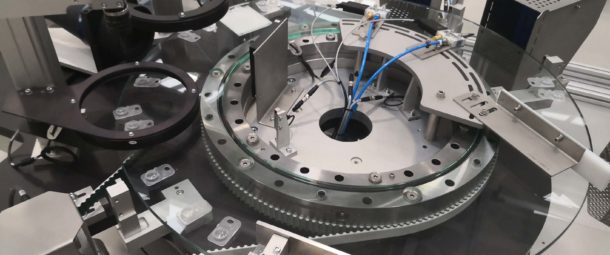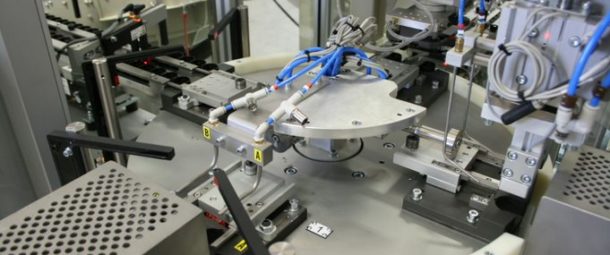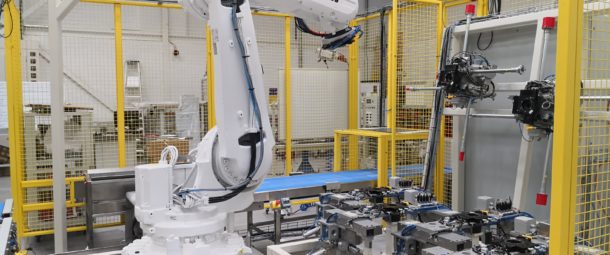Injection Moulding Automation
RNA specialise in providing advanced automation solutions for the injection moulding industry. By automating various stages of the injection moulding process, RNA are able to optimise production, reduce waste, and improve product quality, while also addressing challenges related to labour shortages and rising operational costs.

RNA Offer
- Robotic Part Handling- Robotic Insert Moulding
- Robotic Two Shot Moulding
- Post-Processing and Assembly
RNA Robotic Automation in Plastic Injection Moulding
Robotic Part Handling
RNA design and develop robotic systems for part handling. Robots are programmed to remove finished parts from the mould, place them in storage, or conduct post-processing tasks like trimming or assembling components.
The robots are equipped with sensors and end-of-arm tooling to handle parts of different shapes and sizes without causing damage.
Learn more about RNA VariTend™ Machine Tending Automation
Robotic Insert Moulding
In insert moulding, pre-fabricated components (inserts) are placed into the mould before plastic is injected to form a composite part. RNA integrate robotic systems into this process by using them to precisely position these inserts in the mould.
Robotic systems ensure that inserts are consistently placed in the correct position in an accurate time, improving the quality and reliability of the final product. This is particularly important in industries like automotive or electronics, where small errors in placement or changes in cycle time can lead to defective or unsafe parts.
Learn more about RNA Application Study: Robotic System for Insert Moulding
Robotic Two Shot Moulding
Two shot overmoulding involves moulding a layer of plastic over an existing part, often made of a different material. RNA integrate robots in this complex process by handling both the initial part and the overmoulded layer, ensuring precision and alignment between the two components.
In the production of multi-material products, robotic systems can handle the transition from one moulding cycle to the next, transferring the initial component from one mould to another for the overmoulding step.
Post-Processing and Assembly
In addition to the core injection moulding process, RNA integrate robotic system in post-processing tasks, such as trimming excess plastic, finishing, and assembly of components.
After a part is ejected from the mould, robotic arms equipped with end of arm tooling can take the product to a cutting/deburring station to trim off any excess material known as “flash,” or remove a sprue ensuring the part meets the required dimensions.
RNA robotic systems are also used in the assembly process, where they can combine multiple moulded components into a final product. This is especially useful in industries that require complex, multi-part assemblies, such as automotive or consumer electronics.
RNA can take the finished products and put them through many after moulding processes such as height measurement, vison inspection, electrical testing, laser marking, etc.
Learn more about RNA VariCube R™ Standard Flexible Assembly Machine
Increase Production Efficiency
The robotic system operates continuously without breaks, significantly increasing the speed of production, resulting in shorter cycle times and higher throughput.Enhanced Product Quality
The robotic system leads to a lower rejection rate and ensures that every part meets the required specifications. Automated quality control systems, often integrated with robotics, can detect defects in real-time and reject faulty parts before they proceed further in the production process.Cost Reduction
The use of Robotic Automation can reduce labour costs, minimise waste, and optimise resource usage, and also contributes to reduced downtime and maintenance costs.Improved Workplace Safety
Injection moulding can involve hazardous materials and high temperatures, posing safety risks to human workers. Robots can handle these dangerous tasks, reducing the risk of workplace accidents and injuries.Scalability
Robotic systems are easily scalable to meet growing production demands. This scalability ensures that companies can meet fluctuating customer demands and stay competitive in the market.The Basics of Plastic Injection Moulding
Plastic injection moulding is a manufacturing process in which molten plastic is injected into a mould, cooled, and ejected as a finished part. This process is widely used to manufacture plastic parts and components across various industries, from automotive and electronics to consumer goods and medical devices.
Why Choose Us?
By streamlining automation implementation, we enable manufacturers to improve efficiency, reduce labour costs, and enhance product quality with minimal disruption.
- We help manufacturers overcome challenges in applying robotic automation in plastic injection moulding by providing tailored solutions that address key obstacles like high upfront costs, integration complexities, and the need for specialised expertise.
- We offer scalable robotic systems that can be seamlessly integrated into existing production lines, minimising downtime and optimising workflow.
- We provide training and support for maintenance and programming, ensuring manufacturers can efficiently operate and manage their robotic systems.
Applications
Contact
Send your message to a member of our team
Read our Privacy Policy to learn how we manage and protect your submitted information.
